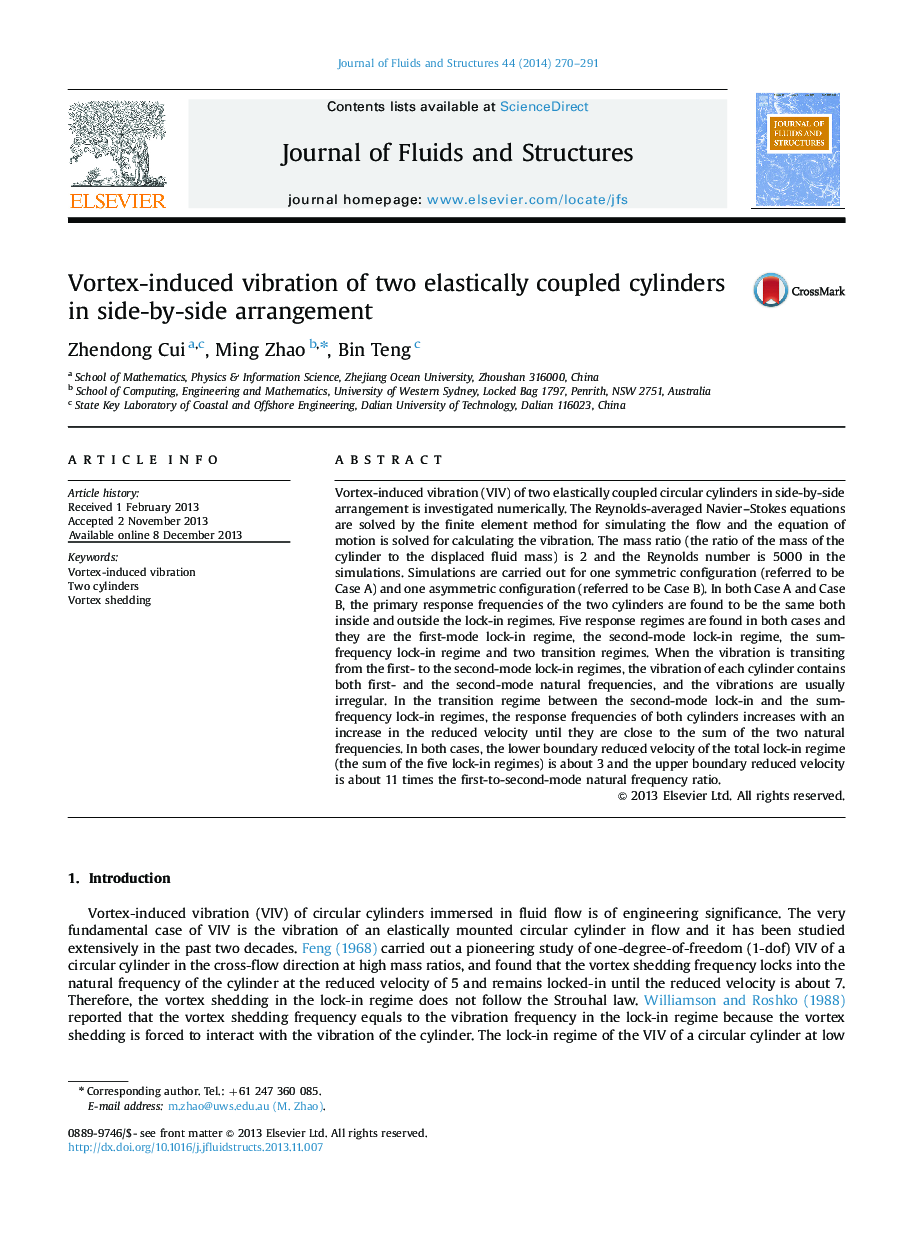| Article ID | Journal | Published Year | Pages | File Type |
|---|---|---|---|---|
| 796930 | Journal of Fluids and Structures | 2014 | 22 Pages |
Vortex-induced vibration (VIV) of two elastically coupled circular cylinders in side-by-side arrangement is investigated numerically. The Reynolds-averaged Navier–Stokes equations are solved by the finite element method for simulating the flow and the equation of motion is solved for calculating the vibration. The mass ratio (the ratio of the mass of the cylinder to the displaced fluid mass) is 2 and the Reynolds number is 5000 in the simulations. Simulations are carried out for one symmetric configuration (referred to be Case A) and one asymmetric configuration (referred to be Case B). In both Case A and Case B, the primary response frequencies of the two cylinders are found to be the same both inside and outside the lock-in regimes. Five response regimes are found in both cases and they are the first-mode lock-in regime, the second-mode lock-in regime, the sum-frequency lock-in regime and two transition regimes. When the vibration is transiting from the first- to the second-mode lock-in regimes, the vibration of each cylinder contains both first- and the second-mode natural frequencies, and the vibrations are usually irregular. In the transition regime between the second-mode lock-in and the sum-frequency lock-in regimes, the response frequencies of both cylinders increases with an increase in the reduced velocity until they are close to the sum of the two natural frequencies. In both cases, the lower boundary reduced velocity of the total lock-in regime (the sum of the five lock-in regimes) is about 3 and the upper boundary reduced velocity is about 11 times the first-to-second-mode natural frequency ratio.
